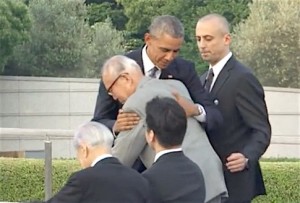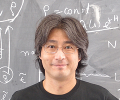On 27 May this year, Barack Obama visited the site of atomic bombing in Hiroshima – a first for a serving President of the United States. I was deeply moved by the picture where Obama embraced an aging hibakusha, an atomic bomb survivor. It was very significant that the visit was not about the war crimes committed by Japan, a political debate about nuclear deterrent, or whether it was the right decision for the US to drop the atomic bomb. It was all about what nuclear weapons do to people and how we can avoid a complete annihilation of human civilisation by a push of a button with another push for nuclear disarmament.
Being a physicist, I welcomed this historic visit with a bittersweet feeling. We physicists created this monster. Physics is about understanding how nature works. Once we understand something, we can use the new knowledge to create a new technology. Sometimes that technology can be extremely harmful.
When I started working on the linear collider I was very happy to learn and today I am happy to confirm that the technologies developed for the future linear colliders are very peaceful and useful. Past studies for linear colliders have led to an amazing technology that helps to make particle accelerators much smaller and much less expensive. It can be used for cancer diagnosis and therapy with a smaller device that fits inside hospital buildings. It allows for much brighter light sources that can be used for studying proteins and developing new medications, designing new materials, and even archaeology to study what is inside a precious artifact without cracking it. It is hoped that accelerator technology can be used to reduce nuclear waste by transmuting dangerous long-lived isotopes to ones that decay away quickly. It would also aid securing borders by “seeing through” cargos without touching them. The technology to steer and focus particle beams to nanoscale would help with nanoscale fabrication.
In addition, large-scale scientific projects such as particle accelerators would bring people and nations together, even when some of them are in hostile situations. I was very impressed to learn about the SESAME project, a new light source built in Jordan. For this project, Middle Eastern countries in very difficult political situations are working together: Baharain, Cyprus, Egypt, Iran, Israel, Jordan, Pakistan, Palestininan Authority, and Turkey. CERN, the site for the largest particle accelerator to date, attracts scientists from about a hundred countries, some of them also in hostility.
I believe that the basic research we conduct with particle accelerators will help build a more peaceful world.
Read also : Science for Peace (16 october 2014) by Hitoshi Murayama, Barack Obama’s speech in Hiroshima or watch a video of his speech



Recent Comments